In a world where innovation is the heartbeat of progress, one force has emerged as the catalyst for transforming the very DNA of marketing: Artificial Intelligence (AI). This dynamic synergy reshapes how businesses engage with their audience and operations, and drives revenue growth. Industry reports also indicate increased AI usage in marketing investments across advertising, predictive analytics and building strong customer relationships.
The market size of AI in marketing was projected to grow from £6.5 billion in 2018 to £40.1 billion by 2025, at a CAGR of 29.79% during the forecast period, according to a report by MarketsandMarkets. In this article, we’ll explore the current AI trends in marketing and the impact of AI on marketing, focusing on key use cases, benefits, challenges and solutions offered by Technolynx.
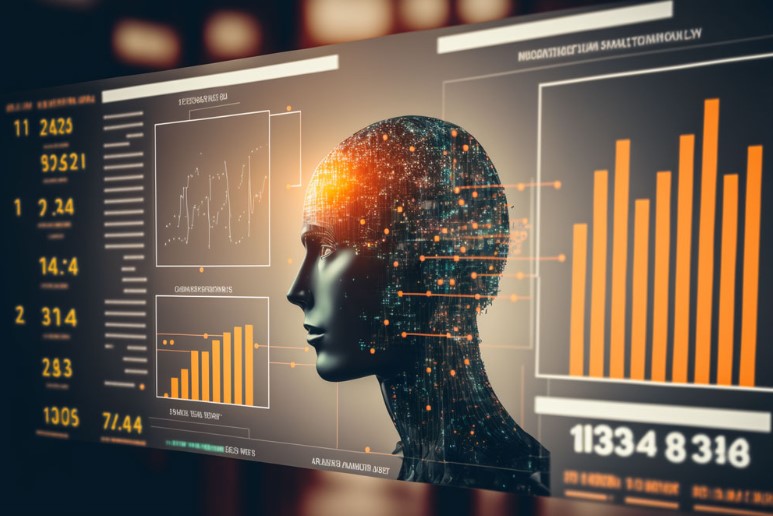
Use Cases
Integrating AI technologies skyrockets the entire market studies lifecycle, from data collection to analysis and insights extraction. This not only saves time but also encourages marketers to make informed choices that resonate with their target audience, ultimately enhancing campaign effectiveness and ROI.
Market Research Automation: AI’s Role in Redefining Customer Insights

AI automates the entire lifecycle of market research with the help of its fundamental technology - NLP (Natural Language Processing). It enables machines to comprehend and interpret human language, extracting valuable insights from customer feedback, social media data, and online reviews. It includes recent advancements like:
- Analysing Customer Feedback
NLP analyses diverse customer feedback forms like surveys, comments, and direct messages. It also helps understand customer sentiments, preferences, and areas of improvement. For example, MonkeyLearn’s sentiment analysis tool processes customer feedback, enabling precise sentiment categorisation.
- Processing Social Media Data
Social media serves as a rich source of unstructured data, and NLP algorithms help monitor brand mentions, track trends, and understand consumer opinions expressed on social platforms. For instance, Brandwatch utilises NLP to perform sentiment analysis on social media, providing actionable insights.
- Extraction of Insights from Online Reviews
Online reviews provide a wealth of information, and NLP is employed to extract key insights from these textual sources. By applying NLP algorithms, marketers can identify common themes, sentiments, and factors influencing customer perceptions.
Solutions like Reputation.com leverage NLP to filter valuable data from the vast repository of online reviews.
- Identification of Consumer Sentiments
NLP becomes a powerful tool for identifying consumer sentiments and categorising feedback into positive, negative, or neutral. Lexalytics leverages NLP to gauge the emotional tone of customer communications and customise business strategies accordingly.
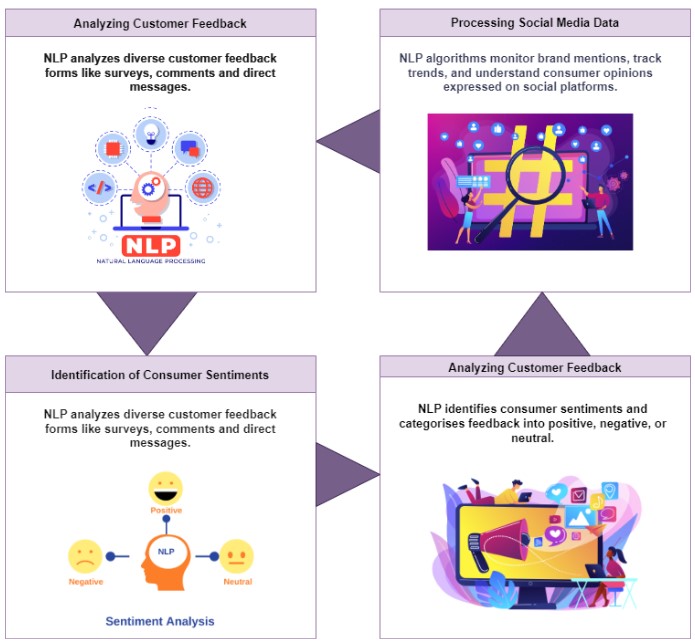
AI’s Unleashed Power in Ads Generation - Crafting Text and Visuals
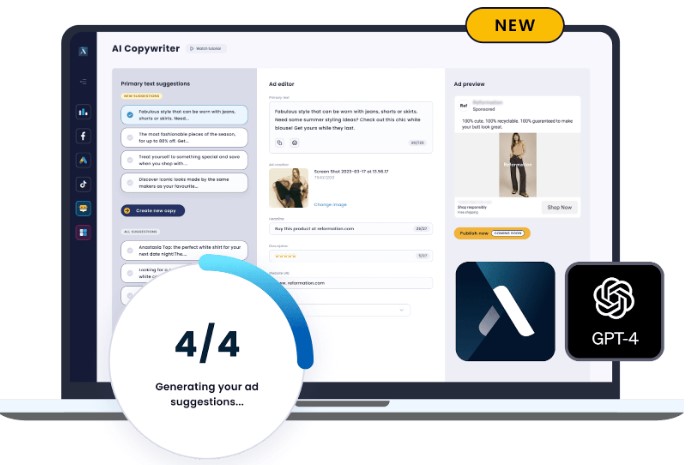
Machine learning algorithms are transforming the ads generation landscape, introducing unparalleled targeting precision. A prime example of this innovation is evident in platforms like Google Ads, where sophisticated algorithms leverage historical data to customise ad content—both text and visuals—resulting in optimised campaigns that resonate with the intended audience.
1. Optimising Targeting Precision:
Before AI, advertising targeting relied heavily on broad demographics and basic segmentation. With machine learning algorithms at the forefront, they process vast data for targeting users based on their behaviours, preferences, and intent.
For example, Google Ads has seen an increase of 15% in conversion rates with the help of Machine Learning algorithms.
2. Text and Visual Targeting
Tailoring ad content was a time-consuming and manual process, limiting the ability to address diverse audiences before the advent of AI. However, Machine learning allows dynamic ad content generation, crafting real-time text and visuals based on user preferences.
For example, Dynamic web ads showcased a 2x higher click-through rate (CTR) compared to static ones with 50% lower, on average.
3. Maximum Impact at the Right Time
Before the integration of AI, ad placements worked on general scheduling, lacking on most suitable times for personal engagement with users. With AI, Machine Learning uses Predictive Analytics to analyse historical data and optimise ad delivery. This ensures that the right message is presented to the right audience precisely when they are most likely to interact.
4. Continuous Learning and Adaptation
Before AI, campaign adjustments were typically made based on periodic reviews and manual interventions. With AI, machine learning continuously learns from ongoing campaigns. The algorithms adapt to changing user behaviour and market trends, refining targeting strategies and ad content in real time.
Retail Revolution: AI’s Dynamic Influence on In-Store Ads
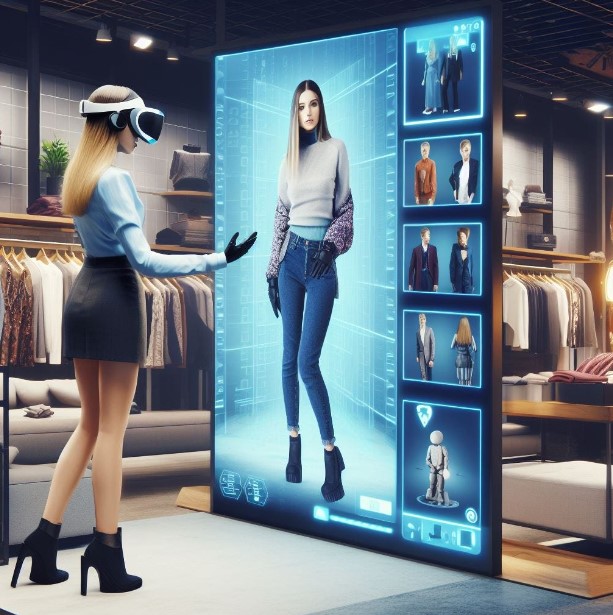
Computer vision enables in-store advertising by understanding visual content. For example, visual analysis and facial recognition tools allow retailers to identify customer reactions, optimising in-store layouts for enhanced shopping experience.
Visual Content Analysis
These algorithms analyse images and videos across various platforms, such as social media and e-commerce sites. Marketers can track the presence of their products in the visual landscape, identify trends, and assess consumer sentiment towards their brand.
Emotion Analysis in Advertising
Facial recognition algorithms within Computer Vision are applied to analyse consumer emotions in response to video advertisements. Marketers can gain insights into how different elements of an ad evoke emotional responses.
In-Store Behaviour Analysis
Computer Vision tracks customer behaviour within physical retail spaces that enable retailers to create personalised shopping experiences.
Virtual Try-On Experiences
Computer Vision offers augmented reality technology for virtual try-on experiences in the fashion and beauty section. Consumers can visualise how clothing items or makeup products will look on them before making a purchase.
Surveillance and Monitoring
Computer Vision surveys physical spaces for monitoring customer interactions and compliance with safety protocols to enhance real-time safety in the retail environment.
Beyond Boundaries: AI’s Impact on Out-of-Store Ad Campaigns
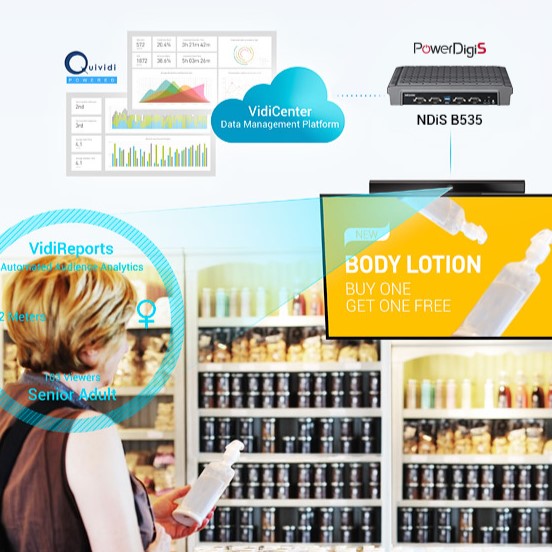
Out-store ads benefit from the synergy of IoT and edge computing. For example, Location-based push notifications use IoT-enabled mobile devices to send targeted messages to customers based on their location. Retailers can attract customers near a store with personalised promotions, increasing customer traffic and engagement.
In-Store Customer Tracking:
IoT beacons and sensors track customer movements within physical retail spaces.
A clothing retailer uses IoT to analyse how customers navigate through the store. Then, edge computing processes this data in real time, providing insights into popular sections and optimising product placements for increased visibility.
Smart Shelf Technology
RFID tags and IoT sensors on shelves provide real-time inventory data and customer interaction information. A grocery store employs smart shelves with RFID tags and sensors.
IoT devices communicate this data to edge computing systems when a product is picked up or placed back on the shelf. This enables instant updates on inventory levels and triggers automated restocking processes.
Location-Based Push Notifications
IoT-enabled mobile devices and beacons send push notifications to nearby customers based on location. A coffee shop uses IoT beacons to detect customers in close proximity.
Edge computing analyses this data and triggers personalised push notifications, offering discounts or promotions to entice customers to enter the shop.
Foot Traffic Analysis for Events
IoT sensors at event venues track attendee movements and interactions. At a trade show, sensors capture data on visitor traffic, popular booth locations, and time spent at each exhibit.
Then, edge computing processes this information, helping event organisers optimise floor layouts for future events.
Precision Personified: AI’s Prowess in Personalised Ad Campaigns

Ad personalisation was limited to basic demographics. With the help of ML algorithms, personalised commercials have evolved by using extensive personal information from search history, geo-location and online activities. Using its recommendation engine powered by AI, Amazon reported a 29% increase in sales due to personalised product recommendations based on user behaviour.
Also, AI algorithms analyse past purchases, browsing history, and user interactions to offer personalised product recommendations. Personalised ads foster deeper engagement and encourage repeat purchases. Using AI to curate personalised playlists, Spotify observed increased user engagement and longer subscription periods.
AI’s Influence on Evolving Consumer Intelligence Platforms (AICI)
These platforms leverage NLP to enhance customer experiences. Zendesk utilises NLP for sentiment analysis, tailoring responses for enhanced customer experiences. By understanding customer sentiments, brands can tailor responses, resolve issues promptly, and create a more positive and personalised customer experience.
Benefits
Integrating AI in marketing campaigns translates into measurable advantages, from improved customer satisfaction to increased ROI and streamlined operations.
Optimised ROI
Implementing AI in marketing campaigns significantly boosts Return on Investment (ROI). According to McKinsey, commercial leaders who invest in AI are seeing a revenue uplift of 3% to 15% and a sales ROI boost of 10% to 20%. AI-driven campaigns consistently outperform traditional approaches by precisely targeting high-value customer segments and optimising ad spending.
Personalised Marketing Content
AI marketing tools deliver personalised and dynamic content across channels like social media or websites. Clinique - a skincare brand, employs personalised AI marketing through an online skincare consultation tool where customers answer a series of questions about their skin preferences and issues, and the AI consultant tool generates tailored content for their skincare routine and product suggestions.
Hyper-Personalised Experiences
With predictive analytics, you can analyse customer requirements and offer product recommendations, pricing and promotions. Amazon analyses customers’ browsing history, demographic data, and product pricing with AI algorithms, providing highly personalised suggestions accordingly.
Challenges
Despite its transformative potential, AI Marketing Limitations in marketing face certain challenges. Also, AI algorithms may struggle to understand subtle human emotions, resulting in personalised inaccuracies. Bridging this gap between AI algorithms and human behaviour context remains a continuous challenge.
- Data Privacy Concerns: In 2020, IBM’s report stated the average cost of data breaches was anticipated to be $3.86 million globally. The AI campaigns rely on diverse datasets, making them attractive targets for hackers.
- Data Quality Issues: Biassed or incomplete data can hamper the accuracy of AI models, leading to suboptimal outcomes in marketing strategies.
- Implementation Challenges: Marketers may struggle to integrate AI into their existing platforms which require substantial investments in technology and staff training.
- Talent and Expertise Gap: A shortage of skilled professionals proficient in marketing and AI hampers effective implementation. Addressing this gap needs upskilling in technical skills in machine learning or data analysis.
TechnoLynx’s Innovative Solutions and AI Integration Services
At TechnoLynx, we pride ourselves on delivering Custom Innovative Solutions crafted to the unique requirements of our clients. In the era of AI development services, we know that the success of marketing campaigns lies in the power of artificial intelligence. Our knowledge in AI Integration Services seamlessly comprises cutting-edge technology into your marketing techniques to ensure they are adaptive and future-proof.
We understand the modern market demands where TechnoLynx excels – our goal is to understand your industry and design AI-driven marketing tools that resonate with your audience. Whether you seek personalised customer experiences, data-driven insights, or predictive analytics, TechnoLynx is your strategic partner in transforming challenges into opportunities with our tailored marketing solutions.
Final Thoughts
AI’s integration into marketing strategies exemplifies a transformative leap, amplifying precision, personalisation & performance. As marketers navigate the challenges of a dynamic market, taking advantage of AI-driven innovations is instrumental for sustainable growth, driving engagement, and forging deeper connections with audiences. Despite the evident benefits, implementing AI in marketing is not without challenges like data privacy and compliance issues.
However, as a forward-thinking software company, we at Technolynx stand poised to address these challenges head-on, offering custom innovative solutions through our AI marketing services and tailored marketing solutions. Our expertise in AI integration services positions us as strategic partners, navigating the complexities of AI in marketing to unlock unprecedented ROI, improve customer experiences, and heighten consumer engagement.
References:
- Pang, G., & Pang, G., 2022. The AI Chip Race. IEEE Intelligent Systems, 37, pp. 111-112.
- Johnson, G., Lewis, R., & Nubbemeyer, E., 2016. The Online Display Ad Effectiveness Funnel & Carryover: A Meta-study of Predicted Ghost Ad Experiments.
- Kireyev, P., Pauwels, K., & Gupta, S., 2016. Do display ads influence search? Attribution and dynamics in online advertising. International Journal of Research in Marketing, 33, pp. 475-490.
- Linden, G., Smith, B., & York, J., 2003. Amazon.com Recommendations: Item-to-Item Collaborative Filtering. IEEE Internet Comput., 7, pp. 76-80.
-Parihar, A., & , B., 2018. A Study on Sentiment Analysis of Product Reviews. 2018 International Conference on Soft-computing and Network Security (ICSNS), pp. 1-5.












